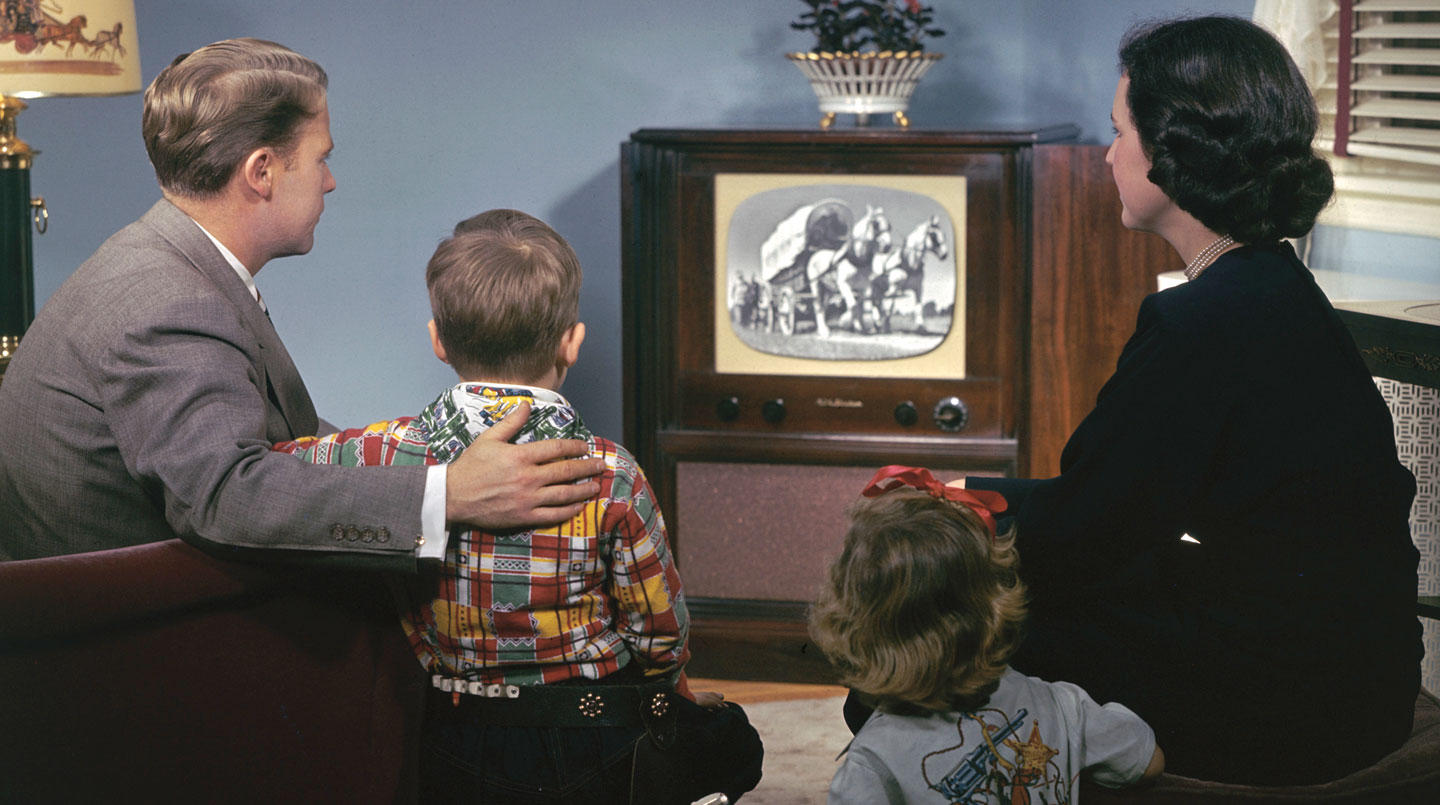It’s Friday night at Ella’s house in New Jersey, and each member of her family is enjoying a show.
Ella, 13, is downstairs studying YouTube baking videos on her iPhone. Her 10-year-old brother, Elijah, is in his room on his laptop, watching the New York Knicks get crushed by the Golden State Warriors. Meanwhile, their parents are upstairs streaming their favorite series on Netflix.
When Ella’s parents were her age, such a scene would have been unimaginable. When they were teenagers, computers sat on desks and were mainly for doing work, and phones were just for talking. If you wanted to watch a show, you had to watch it on a television set—at the time it was being aired. Plus, there were a limited number of shows to choose from.
The stark difference between Ella’s and her parents’ childhood experiences with TV is not surprising. After all, television has changed dramatically since it was first popularized in 1939 at the World’s Fair in New York. And that evolution has had an impact on U.S. culture. Over the decades, TV has at times divided, challenged, and united us as a society.
“Television had this kind of cultural glue feature to it,” says Robert Thompson, a professor of television and pop culture at Syracuse University in New York. “It brought whole families—and even the nation—together.”
It is Friday night at Ella’s house in New Jersey. Each member of her family is enjoying a show.
Ella is 13. She is downstairs studying YouTube baking videos on her iPhone. Elijah, her brother, is 10. He is in his room on his laptop. He is watching the New York Knicks get crushed by the Golden State Warriors. Meanwhile, their parents are upstairs streaming their favorite series on Netflix.
No one would have imagined such a scene when Ella’s parents were her age. When they were teenagers, computers sat on desks. They were mainly for doing work. Phones were just for talking. If you wanted to watch a show, you had to watch it on a television set at the time it was being aired. The number of shows to choose from was limited.
The big difference between Ella’s and her parents’ childhood experiences with TV is not surprising. Television has changed a lot since it first became popular in 1939 at the World’s Fair in New York. Those change have affected U.S. culture ever since. Over the decades, TV has at times divided, challenged, and united us as a society.
“Television had this kind of cultural glue feature to it,” says Robert Thompson. He is a professor of television and pop culture at Syracuse University in New York. “It brought whole families—and even the nation—together.”

